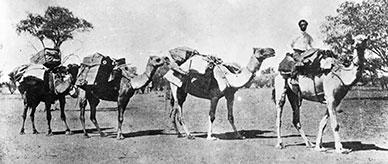


About this record
This is a black-and-white map of Australia showing areas of 'habitability' (where people can live) based on the quality of agricultural or pastoral land. The map shows the correlation between quality of agricultural and pastoral land and density of population, which is indicated by black lines. Coalfields are also noted on the map. The map is labelled as being 'After T. Griffith Taylor in "Limits of Land Settlement"'. It comes from a series called 'Maps and mapping' produced by the Department of Information.
Educational value
- Is a map modelled on the early 20th-century work of Professor Griffith Taylor of the University of Sydney, who argued that cultivation and settlement should not spread into certain tropical and desert regions in Australia.
- Is typical of the types of map that Griffith Taylor produced in the 1920s to counter arguments for a huge population size for the Australian continent – Griffith Taylor's aim was to advance public understanding of his analysis that the limits to Australian settlement had in fact been reached by the 1920s.
- Shows that the distribution of Australia's population closely followed the distribution of quality agricultural and pastoral land – little has changed in this regard at the beginning of the 21st century.
- Shows that the vast majority of Australia's population inhabited low-lying coastal plains in the east, southeast and southwest – almost 90 per cent of today's Australians live within 50 kilometres of the coast.
- Shows that about a quarter of Australia was designated 'useless' – both at the time the map was drawn and today Indigenous people would see this claim as false, regarding these lands as significant country; more recently, important mineral discoveries have been made in such areas.
- Shows that a small proportion of Australia's area is quality agricultural land – the country consists of a land area of 7,617,930 square kilometres of which only 6.55 per cent (498,974 square kilometres) is arable land.
- Demonstrates, when compared with more modern land use and population maps, that there has been little change in the pattern of land use and settlement – most traditional farming and habitation occurs east and south of the Great Dividing Range, with huge cattle and sheep stations being the necessary economic units to the west of the range.
- Shows coal fields but gives little indication of their huge extent, especially in New South Wales and Queensland, which produce more than 90 per cent of Australia's black coal, and in Victoria, which produces all of Australia's brown coal – Australia is the world's fourth-largest producer of black coal (7 per cent) and the third-largest producer of brown coal (8 per cent).
Acknowledgments
Learning resource text © Education Services Australia Limited and the National Archives of Australia 2010.
Related themes
Need help with your research?
Learn how to interpret primary sources, use our collection and more.



